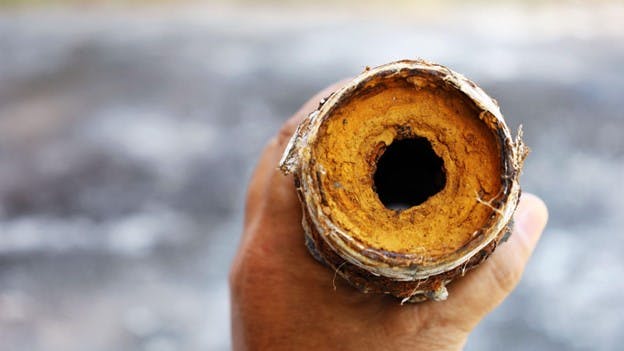January 2024
10 Chemicals Harming Sacramento Water Quality
The city of Sacramento might just have it all. Stunning nature, plenty to do, farm-to-fork cuisine, growing industries, that Northern California climate, affordable living, history, culture, and being a stone's throw away from San Francisco[1] . This is probably why it’s regularly rated the best city in all of California to live in. It’s also the reason Sacramento is one of the fastest growing cities in California.
This growth comes at a cost though. With the greater metro area adding almost 100 people every day, the aging infrastructure in the Golden State capital continues to be strained. Delivering safe drinking water to over 2 million homes and businesses is becoming a challenge as droughts and pollution from agriculture and industry plague local water sources.
In this article, we dive deep into Sacramento water quality to find out exactly how big these problems are. We'll explore the sources of Sacramento's water, the challenges in maintaining its cleanliness and safety, and whether or not you should be filtering your water.
Where Does Sacramento Water Come From?
About 80% of Sacramento's water supply is sourced from the American River and Sacramento River. This is managed by the City of Sacramento Department of Utilities which treats runoff from a watershed spanning 25,000 square miles.
The remaining 20% of the city's water comes from groundwater wells, supplemented by transfers from the Sacramento County Water Agency and the Sacramento Suburban Water District.
How Is Sacramento Water Treated?
Sacramento's water quality is ensured through a water treatment process carried out by two main plants: the Sacramento River Treatment Plant and the E.A. Fairbairn Water Treatment Plant, along with support from two groundwater basins. The water treatment process includes:
- Intake: Water is pumped from the Sacramento and American rivers into grit basins.
- Grit basin: Heavy particles like sand settle out, allowing the cleaner water to advance to the flocculation tanks.
- Flocculation tanks: Coagulants are added, causing particles to enlarge for effective sedimentation.
- Sedimentation tanks: Here, the enlarged particles settle to the bottom, removing around 85% of suspended matter.
- Filtration: The water passes through layers of sand and anthracite coal, emerging crystal clear.
- Reservoirs: Treated water is then stored in reservoirs until it’s ready to be distributed to over half a million customers in a 100-square-mile area.
Water management teams deliver 37 billion gallons of high quality water annually through a water system that includes 1,700 miles of pipeline.
Is Sacramento Water Clean?
Sacramento water quality faces many challenges. The biggest is that most of the Sacramento area watershed is agricultural land. Runoff from farming operations continues to impair the Sacramento, American, and Ferry rivers. All of these are considered impaired by the U.S. Environmental Protection Agency (EPA) due to being contaminated with copper, mercury, and almost 20 different pesticides. And the groundwater wells aren’t faring much better.
According to the 2022 Sacramento Consumer Confidence Report, the wells located north of the American River face risks from various sources. These include sewage collection systems, spillage from underground storage tanks, established contaminant plumes, runoff from agricultural areas, and operations at gas stations, dry cleaners, metal finishing, chemical storage facilities, electronic manufacturing sites, and automobile service and repair centers.
Meanwhile, the wells situated south of the American River primarily contend with potential contamination from underground storage tanks that may leak, along with challenges posed by sewage collection systems.
Is It Safe to Drink the Tap Water in Sacramento?
According to Sacramento’s Water Quality Report and the U.S. EPA, Sacramento’s tap water is safe to drink. It’s important to note that meeting regulatory standards doesn’t necessarily mean water is free of dangerous contaminants.
Public water suppliers in the United States must meet federal standards for safety and quality. Currently this means enforcing limits on just 92 out of thousands of possible contaminants in tap water.
Many pollutants, like microplastics, remain unregulated due to the difficulty of testing for them. Meanwhile, chemicals like PFAS have been known to cause negative health effects since 2000 but are just now being considered for enforceable regulation by the EPA.
Water watchdog groups like the Environmental Working Group (EWG) have long argued that the limits currently imposed are far too lenient according to our current understanding of them and that many regulations are simply out of date. They claim current drinking water quality standards are not good enough to meet public health goals.
Which Chemicals Are Hurting Sacramento Water Quality?
While Sacramento water quality meets the legal requirements for the following chemical contaminants, modern science finds them to be too high. Here’s how the chemical levels in Sacramento’s water meet the drinking water standards as recommended by EWG.
Haloacetic Acids (HAA5)
HAA5 is made up of five haloacetic acids: monochloroacetic acid, dichloroacetic acid, trichloroacetic acid, monobromoacetic acid, and dibromoacetic acid. These chemicals are known as disinfection byproducts, as they result from disinfectants like chlorine interacting with organic matter in water. Long-term exposure to HAA5 can lead to cancer.
Levels of HAA5 in Sacramento water have exceeded what the EWG recommends for safety by 398 times:
- EPA maximum allowance: 60 parts per billion (ppb)
- EWG recommended maximum: 0.1 ppb
- Sacramento maximum contaminant level: 39.8 ppb
Haloacetic Acids (HAA9)
HAA9 includes all of the contaminants from HAA5 but adds bromochloroacetic acid, bromodichloroacetic acid, chlorodibromoacetic acid, and tribromoacetic acid. These are also disinfection byproducts and are also cancer-causing.
Levels of HAA9 in Sacramento water have exceeded what the EWG recommends for safety by 463 times:
- EPA maximum allowance: No legal limit
- EWG recommended maximum: 0.06 ppb
- Sacramento maximum contaminant level: 27.8 ppb
Total Trihalomethanes (TTHMs)
TTHMs — like the haloacetic acids above — are formed when chlorine interacts with organic compounds in drinking water. They’re also known to be carcinogenic. This category is made up of four chemicals: chloroform, bromodichloromethane, dibromochloromethane, and bromoform.
Levels of TTHMs in Sacramento water have exceeded what the EWG recommends for safety by 457 times:
- EPA maximum allowance: 80 ppb
- EWG recommended maximum: 0.15 ppb
- Sacramento maximum contaminant level: 68.5 ppb
Chromium (Hexavalent)
Chromium is another common contaminant found in U.S. water supplies. It can occur naturally but is also an industrial pollutant. Although it’s known to be a carcinogen, this contaminant is still unregulated by the EPA.
Chromium levels in Sacramento water have exceeded what the EWG recommends for safety by 240 times:
- EPA maximum allowance: No legal limit
- EWG recommended maximum: 0.02 ppb
- Sacramento maximum detected level: 4.79 ppb
Nitrates
Nitrates usually end up in water supplies through stormwater runoff from fertilizers, but they can also come from septic tanks. They can cause oxygen deprivation in infants and increase the risk of certain cancers.
Nitrate levels in Sacramento water have exceeded what the EWG recommends for safety by 12 times:
- EPA maximum allowance: 10 parts per million (ppm)
- EWG recommended maximum: 0.14 ppm
- Sacramento maximum detected level: 1.72 ppm
Arsenic
Arsenic is carcinogenic and is known to cause damage to the brain, central nervous system, skin, and blood vessels. Arsenic is a common contaminant in U.S. public drinking water because it can occur naturally in groundwater.
Arsenic levels in Sacramento water have exceeded what the EWG recommends for safety by 701 times:
- EPA maximum allowance: 10 ppb
- EWG recommended maximum: 0.004 ppb
- Sacramento maximum detected level: 2.80 ppb
Radium
Radium is a radioactive heavy metal found both in nature and as a byproduct of oil and gas production. Radium is a known carcinogen. Legal limits for radium are measured in picocuries per liter (pCi/L), which is a measure of radioactivity.
Radium levels in Sacramento water have exceeded what the EWG recommends for safety by 11 times.
- EPA maximum allowance: 5 pCi/L
- EWG recommended maximum: 0.05 pCi/L
- Sacramento maximum detected level: 0.56 pCi/L
Uranium
Uranium is a radioactive heavy metal found both in nature and as a byproduct of oil and gas production. Uranium is a known carcinogen. Legal limits for uranium are measured in picocuries per liter (pCi/L), which is a measure of radioactivity.
Uranium levels in Sacramento water have exceeded what the EWG recommends for safety by 4.7 times:
- EPA maximum allowance: 20 pCi/L
- EWG recommended maximum: 0.43 pCi/L
- Sacramento maximum detected level: 2.01 pCi/L
Perfluorooctanoic Acid (PFOA)
PFOA is a member of a group of chemicals used in nonstick products and in firefighting foams on military bases. They are known as forever chemicals since they don't break down in the environment or in our bodies. Known to cause endocrine disruption, accelerated puberty, thyroid changes, liver and immune system damage, and cancer, the U.S. EPA is now proposing limits in drinking water.
PFOA levels in Sacramento water have exceeded what the EWG recommends for safety by 21 times:
- EPA proposed legal limit: 4 parts per trillion (ppt)
- EWG recommended maximum: 0.007 ppt
- Sacramento maximum detected level: 0.146 ppt
Perfluorooctane Sulfonate (PFOS)
PFOS is used in many consumer products for stain resistance, nonstick surfaces, and waterproofing. Their usefulness comes from the fact that they don’t break down and aren’t affected by water. Unfortunately they maintain that property in the environment and in your body. PFOS are known to cause cancer, endocrine disruption, early puberty, liver and immune system damage, and thyroid issues.
PFOS levels in Sacramento water have exceeded what the EWG recommends for safety by 3.7 times:
- EPA proposed legal limit: 4 ppt
- EWG recommended maximum: 1 ppt
- Sacramento maximum detected level: 3.71 ppt
Does Sacramento Have Hard Water?
Like much of the U.S., Sacramento does have hard water. Water hardness measures the concentration of minerals like calcium and magnesium in water. As water passes over rocks and soil, it breaks down these minerals and absorbs them, becoming “harder.”
While hard water isn’t harmful to ingest, it is very harmful to your home, appliances, clothing, and skin. Not only do hard water minerals deposit themselves in your plumbing and on your surfaces, but they react with soap on your skin to create soap scum so you never feel fully clean. Hard water can even cause skin conditions like acne and eczema.
If you’re dealing with hard water, a water softener or a salt-free water conditioner will improve your life.
Does Sacramento Add Fluoride to Drinking Water?
Yes, Sacramento does fluoridate their tap water. Fluoride is a naturally occurring substance that’s been proven to protect and rebuild tooth enamel. Many utilities across the U.S. and Canada add fluoride to tap water or adjust its levels as a preventative health measure.
While many people welcome this added dental protection, others would rather have more control over their exposure to fluoride. If you’d like to remove fluoride from your water, you should know that it cannot be removed by boiling or using most carbon water filters. Instead, you’ll need to use a reverse osmosis system like our HomeWater 4-Stage Reverse Osmosis Under Counter Water Filter.
Get the Best-Quality Water in Your Sacramento Home
Sacramento is ranked one of the best cities in California to live, but agricultural runoff has caused some problems for Sacramento water quality. With elevated levels of many contaminants, disinfection byproducts, chromium, nitrates, and arsenic, filtering your water is something folks from the River City may consider.
If you want the best-tasting, cleanest water possible from your Sacramento tap, HomeWater can help. HomeWater's UPSTREAM 4-Stage Whole Home Water Filters can improve your water quality by removing impurities like sediment, chlorine, DPBs, PFAS, microplastics, chromium, and more. Attach a salt-free water conditioner and solve your hard water problems too!
You’ll taste the quality difference instantly with HomeWater.



